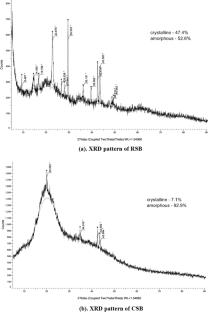Experimental insights and neural network-driven modeling of dye adsorption dynamics using raw and carbonized Spirogyra maxima biomass
Abstract
The current study investigates the sorptive potential of raw Spirogyra maxima biomass (RSB) and carbonized Spirogyra maxima biomass (CSB) for malachite green dye removal by integrating experimental studies with machine learning-driven optimization. Surface analysis revealed significant morphological changes with enhanced porosity and surface roughness following carbonization. X-Ray diffraction analysis showed a structural shift in CSB with amorphous content to 92.9%. Mechanistic modeling identified Sips isotherm and pseudo-first-order kinetics as best fit models with higher monolayer sorptive capacity of 140.2 mg/g for CSB than RSB which can only adsorb 78.67 mg/g of malachite green. Machine learning modeling demonstrated superior predictive artificial neural network (ANN) model performance configured with 80 neurons achieving R2 value of 0.9996. The best performance for the Random Forest (RF) model was observed at 175 trees, achieving an R2 of 0.9637, with mean squared error (MSE) of 18.85 and root mean square error (RMSE) of 4.34. The RF model’s out-of-bag (OOB) error stabilized beyond 150 trees, confirming the generalization capability and stability. The ANN model excelled in capturing the complex sorption nature with close relation to experimental results in the comparative analysis. The reusability studies confirmed the superiority of CSB for five reusability cycles retaining more than 70% of adsorptive activity. The research highlights the significance of integrating machine learning models such as Artificial Neural Network and Random Forest models with experimental adsorption studies for achieving efficient dye treatment.
Graphical Abstract


 求助内容:
求助内容: 应助结果提醒方式:
应助结果提醒方式:


